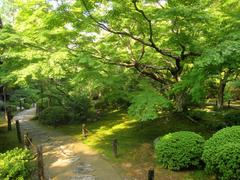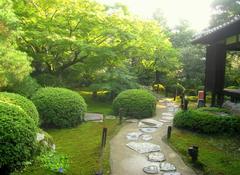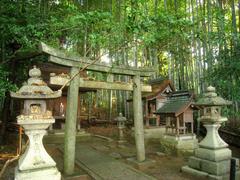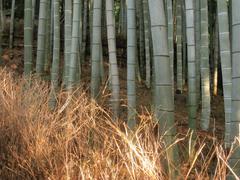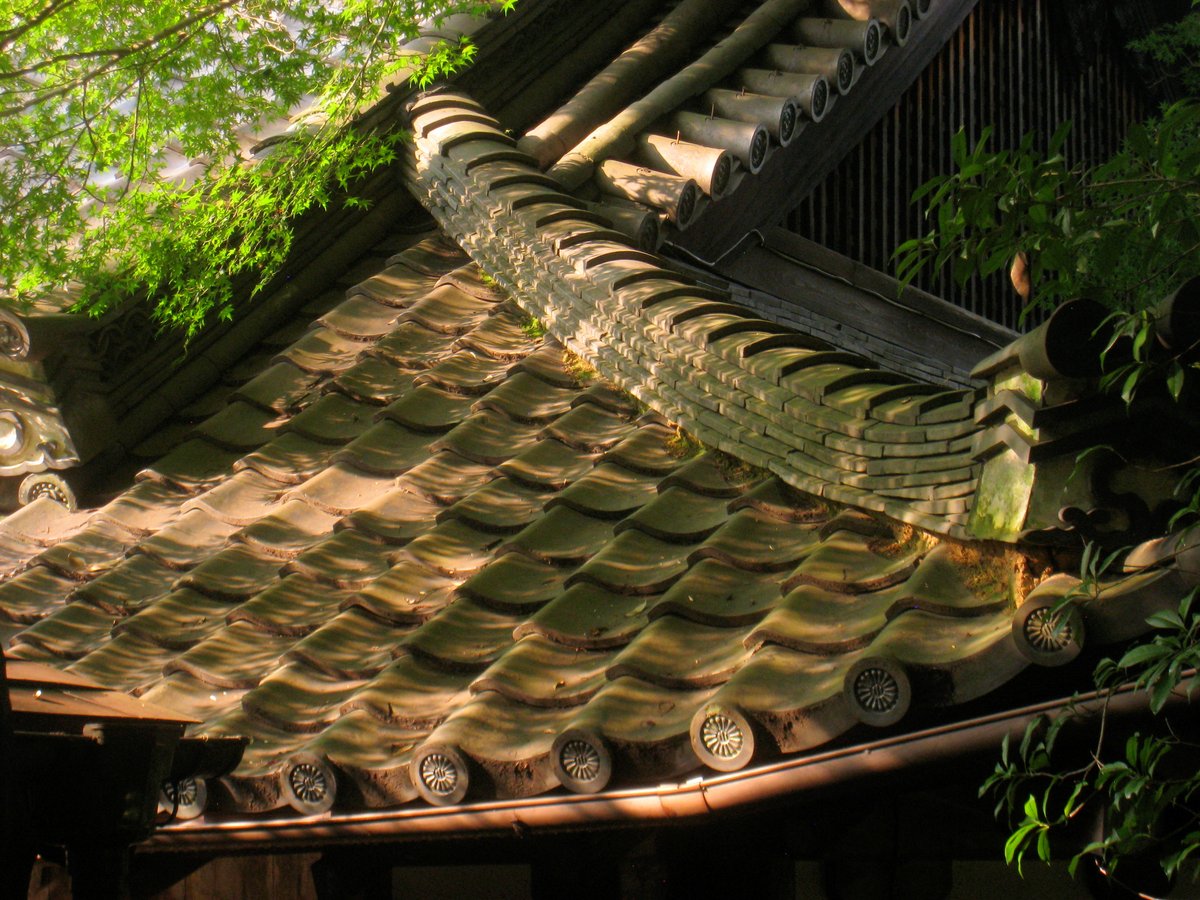
Shōren-in Kyoto: Visiting Hours, Tickets, and Historical Sites Guide
Date: 14/06/2025
Introduction
Situated in Kyoto’s iconic Higashiyama district, Shōren-in Temple (青蓮院) is a remarkable site where imperial history, Buddhist tradition, and Japanese landscape artistry converge. Known as one of Kyoto’s five distinguished Monzeki temples—where head priests were historically chosen from the imperial family or aristocracy—Shōren-in offers a unique window into the city’s spiritual and cultural legacy (Shōren-in Official History; Hike Master Japan). The temple’s tranquil gardens, ancient camphor trees, and exquisite interiors make it a must-visit among Kyoto historical sites.
This comprehensive guide covers Shōren-in’s history and significance, practical visiting information—including hours, ticketing, and accessibility—major architectural and garden highlights, etiquette tips, nearby attractions, and answers to frequently asked questions.
Historical Overview
Origins and Early Development
Shōren-in traces its roots back to the early Heian period as a small lodging (Shōren-bō) on Mount Hiei, established by Saichō, founder of the Tendai sect of Japanese Buddhism (Wikipedia; Shōren-in Official History). The temple eventually moved to Kyoto in the 12th century at the request of Retired Emperor Toba, becoming the residence and study center for his son, Prince Kakukai Shinnō. This move marked the temple’s transformation from a mountain retreat to a prestigious religious and imperial institution (Discover Kyoto; Japan Experience).
Monzeki Temple Status and Imperial Connections
As a Monzeki temple, Shōren-in’s head priests were drawn from imperial or aristocratic lineages, elevating its status within the Tendai sect and Kyoto’s religious landscape (Shōren-in Official History; Wa-pedia). The temple also served as a temporary imperial palace after the Great Kyoto Fire of 1788, housing Empress Go-Sakuramachi. Her converted study room, the “Kobun-tei” tea house, remains a notable feature of the complex (Wikipedia; Japan Experience).
Religious and Cultural Influence
Shōren-in played a pivotal role in Japanese Buddhism: Shinran, the founder of Jōdo Shinshū (True Pure Land) Buddhism, was ordained here at age nine (Discover Kyoto; Japan Experience). The temple houses a range of historical artifacts and art, including mandalas and fusuma (sliding doors) adorned with paintings by renowned artists (Japan Experience).
Turbulence, Reconstruction, and the Modern Era
Like much of Kyoto, Shōren-in suffered during the Ōnin War and underwent significant rebuilding over the centuries. A major fire in 1893 led to the reconstruction of its main hall, completed in 1895 (Wikipedia). The temple remains a designated National Historic Site, continually adapting to preserve its rich legacy (Wikipedia).
Architectural and Garden Highlights
- Main Hall (Kondō): The spiritual centerpiece, housing the revered statue of the Blue Fudō Myōō; tranquil interiors with tatami mats and painted doors (Shōren-In Official Website).
- Kachō-den (Drawing Room): Used for ceremonies, featuring panoramic garden views and intricate fusuma paintings.
- Fusuma Art: Edo-period and contemporary artists depict nature scenes, integrating the temple’s interior with the garden landscape.
- Gardens: Designed by Soami and Enshu Kobori, the strolling gardens feature moss, stepping stones, ponds, a waterfall, and vibrant seasonal flowers (Japan Experience; Wa-pedia).
- Ancient Camphor Trees: Five camphor trees, believed to be over 800 years old, line the entrance and are designated natural treasures by Kyoto City (Discover Kyoto; Wa-pedia).
Practical Visiting Information
Visiting Hours
- Standard Hours: 9:00 AM – 5:00 PM (last admission at 4:30 PM). Hours may change for special events or seasonal illuminations (Kanpai Japan).
- Evening Illuminations: Special events in April and November, 6:00 PM – 10:00 PM.
Tickets and Admission
- General Admission: ~¥500 for adults; ¥400 for junior/high school students; ¥200 for elementary students.
- Evening Illuminations: ¥800 for adults; ¥400 for students.
- Shogunzuka Mound: Separate ticket required; same pricing as above (Walk Around Blog).
Accessibility
- The temple has wooden walkways and garden paths, with some steps and uneven terrain. Staff can assist visitors with mobility challenges.
How to Get There
- Bus: Kyoto City Bus #5, 46, or 100 from Kyoto Station to Jingu-michi stop (3-minute walk) (Inside Kyoto).
- Subway: Tozai Line to Higashiyama Station (5-minute walk) (Walk Around Blog).
- Car: Limited parking; public transport is recommended.
- IC Cards: Suica and other cards accepted on local transport (Kanpai Japan).
- Note: JR Pass is not valid for Shōren-in access.
Facilities
- Restrooms, gift shop, vending machines; non-smoking grounds (Inside Kyoto).
- Public Wi-Fi is limited; consider a pocket Wi-Fi device.
Nearby Attractions and Suggested Itineraries
- Chion-in Temple: Neighboring Jodo sect temple.
- Maruyama Park: Famous for cherry blossoms.
- Yasaka Shrine: Major Shinto shrine nearby.
- Kodai-ji and Murin-an: Notable temples and gardens.
- Suggested Itinerary: Visit Shōren-in in the morning, stroll through Maruyama Park, and explore Chion-in and Yasaka Shrine (Kanpai Japan).
Etiquette and Visitor Tips
- Shoes: Remove shoes indoors; wear socks for comfort.
- Clothing: Dress modestly and comfortably for walking and sitting on tatami mats.
- Photography: Restricted in some indoor areas—observe posted signage (Walk Around Blog).
- Quiet Reflection: Maintain low voices and avoid disruptive behavior.
- Tatami Mats: Avoid stepping on their edges.
- Purification: Use the chozuya (water pavilion) to cleanse hands and mouth before entering (Japan Travel).
- Offerings and Omamori: Purchase protective amulets or make incense offerings for spiritual merit.
Special Events and Cultural Experiences
- Seasonal Illuminations: Spring and autumn events showcase the gardens at night (Walk Around Blog).
- Tea Ceremonies: Occasionally offered in the garden or tea house.
- Guided Tours: Available in English by advance booking (Kanpai Japan).
- Pilgrimage: Shōren-in is part of the Saigoku Kannon Pilgrimage.
Frequently Asked Questions (FAQ)
Q: What are Shōren-in’s visiting hours?
A: 9:00 AM – 5:00 PM (last admission at 4:30 PM); hours may vary for events.
Q: How much do tickets cost?
A: General admission is ¥500 for adults, with discounts for students and children.
Q: Is Shōren-in accessible with a JR Pass?
A: No; use city buses or the subway.
Q: Are there special events?
A: Yes; evening illuminations in April and November are highlights.
Q: Can I take photos?
A: Photography is restricted in some areas; check signs.
Q: Is the temple accessible for visitors with mobility issues?
A: Some uneven paths and steps; staff can assist if needed.
Safety, Security & Sustainability
- Secure personal belongings.
- Staff can assist in emergencies (contact: 561-2345).
- Stay on paths and avoid touching artifacts or plants.
- Admission fees support temple preservation.
Summary and Final Tips
Shōren-in Temple embodies the synthesis of imperial history, Buddhist spirituality, and Japanese aesthetic tradition. Its Monzeki status, ancient camphor trees, and masterful gardens create a peaceful haven in the heart of Kyoto. Despite centuries of change and restoration, Shōren-in remains a vibrant spiritual and cultural landmark (Japan Experience; Hike Master Japan).
Plan your visit by checking current hours and ticket information, respecting temple etiquette, and exploring nearby attractions. For insider tips and curated itineraries, download the Audiala app and stay connected through our social channels.
Sources and Further Reading
- Shōren-in Official History
- Shōren-in Official Website (English)
- Wikipedia: Shōren-in
- Discover Kyoto: Shōren-in Temple
- Japan Experience: Shōren-in Temple
- Hike Master Japan: Shōren-in Temple Kyoto
- Kanpai Japan: Shoren-in
- Walk Around Blog: Shoren-in Temple
- Inside Kyoto: Shōren-in Temple
- Japan Travel: Shrine and Temple Etiquette
- Wa-pedia: Shoren-in Temple, Kyoto
- JW Web Magazine: Best Things to Do in Kyoto in June

